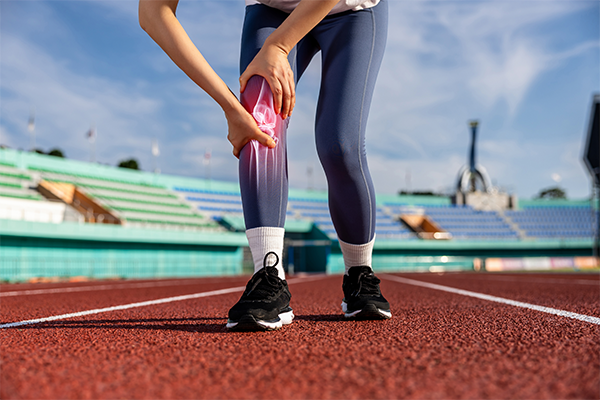
Sports have become a vital part of modern life, whether it’s a morning jog, a weekend football match, or professional-level athletic performance. While physical activity keeps us fit and energised, it also brings the risk of sports injuries. From minor sprains to serious fractures, injuries can happen to anyone professional athletes, fitness enthusiasts, or even beginners. The crucial question many face is, should I rest and let my body heal naturally, or should I seek medical treatment?
Understanding the difference between resting and seeking professional injury treatment can save time, reduce long-term damage, and speed up injury recovery.
Synopsis
Common Sports Injuries
Before we explore the “rest vs. treat” dilemma, let’s look at some common sports injuries:
-
Sprains and Strains - Often occur in ankles, knees, or wrists when ligaments or muscles are overstretched.
-
Shin Splints - Pain along the shin bone, common among runners.
-
Tennis Elbow / Golfer’s Elbow – Inflammation in tendons caused by repetitive motions.
-
Knee Injuries - Ranging from ligament tears (like ACL) to cartilage damage.
-
Fractures - Broken bones caused by high-impact sports.
-
Dislocations – Bones forced out of position, often seen in shoulders and fingers.
-
Concussions – Head injuries due to impact or falls.
Some of these injuries are minor and respond well to rest, while others need prompt athletic injury treatment to prevent permanent damage.

When to Rest
Not every ache or bruise needs a hospital visit. Sometimes, giving your body adequate rest is enough. Rest is essential when:
1. Mild Pain or Swelling
If discomfort is minor and doesn’t interfere with movement, applying the RICE method (Rest, Ice, Compression, Elevation) is usually effective.
2. Muscle Fatigue or Overuse
Athletes often push their limits. Rest days are vital to allow muscles and joints to recover and avoid chronic conditions.
3. Minor Sprains or Bruises
A twisted ankle or small bruise usually improves with 48–72 hours of rest and supportive care.
4. No Loss of Function
If you can still walk, move, or use the affected area without severe pain, resting is often sufficient.
Resting not only promotes natural injury recovery but also prevents worsening of minor athletic injuries.
When to Seek Treatment
While resting works for minor injuries, delaying medical care for serious ones can lead to long-term complications. It’s time to seek injury treatment when:
-
Severe Pain That Doesn’t Improve - Persistent pain even after rest and home care may indicate ligament tears, fractures, or nerve involvement.
-
Swelling and Bruising That Worsens - Rapid or excessive swelling could mean internal bleeding, joint dislocation, or a serious tear.
-
Loss of Function or Mobility - If you cannot put weight on a leg, grip an object, or move a joint without extreme pain, medical evaluation is essential.
-
Visible Deformity - A bent finger, dislocated shoulder, or unnatural bone angle requires immediate medical attention.
-
Head Injuries or Concussions - Any dizziness, confusion, memory loss, or nausea after a head injury needs urgent assessment.
-
Recurring Injuries - If the same injury keeps coming back, it’s a sign of incomplete healing or an underlying structural issue.
At Manipal Hospital Ghaziabad, advanced diagnostic tools like MRIs, CT scans, and digital X-rays help doctors quickly identify the severity of injuries and suggest personalised injury treatment plans.
Balancing Rest and Treatment
The real challenge lies in knowing how much rest is enough and when to step into a hospital. A balanced approach usually works best:
-
Initial Rest (24–48 Hours): Almost every injury benefits from immediate rest and the RICE method.
-
Self-Monitoring: If symptoms improve, continue with rest, light stretching, and gradual return to activity.
-
Early Medical Advice: If symptoms remain or worsen, consulting a sports medicine specialist is wise.
Athletes who delay treatment often face longer injury recovery times compared to those who seek timely help.
The Role of Rehabilitation
Even after proper injury treatment, rehabilitation is key to full recovery. Physiotherapy, guided exercises, and strength training restore flexibility, balance, and endurance. Skipping rehab can result in weaker muscles and recurring injuries.
Rehabilitation includes:
-
Physiotherapy sessions for mobility.
-
Strength training to support injured muscles.
-
Gradual return-to-sport programs to prevent reinjury.
Real-Life Example
Take the case of Rohit, a 28-year-old software engineer and weekend cricketer. During a friendly match, he twisted his ankle while running between the wickets. Thinking it was a minor sprain, he applied ice and rested for a few days. However, the swelling persisted, and he struggled to walk without pain.
When Rohit finally visited Manipal Hospital Ghaziabad, an X-ray revealed a hairline fracture that needed proper immobilisation. Had he delayed further, the injury could have worsened, leading to longer downtime and more complex treatment. With guided care and physiotherapy, Rohit returned to playing cricket within three months.
Tips to Prevent Sports Injuries
While not all injuries can be avoided, adopting preventive measures reduces risk:
-
Warm up before exercise and cool down afterwards.
-
Wear proper footwear and protective gear.
-
Gradually increase intensity instead of sudden overexertion.
-
Stay hydrated to prevent muscle cramps.
-
Listen to your body; don’t ignore pain.
Sports injuries are a part of an active lifestyle, but knowing when to rest and when to seek medical care makes all the difference in injury recovery. Minor aches often heal with rest, but severe or persistent symptoms should never be ignored. Prompt injury treatment ensures faster healing, prevents long-term damage, and helps athletes return to their passion safely.
At Manipal Hospital Ghaziabad, a team of sports medicine experts, orthopaedic specialists, and physiotherapists provide comprehensive care for all types of athletic injuries, helping patients regain strength, mobility, and confidence.
So the next time you face an injury, remember: rest may be enough for the small ones, but treatment is the wiser choice when the signs point to something serious.
FAQ's
If pain, swelling, or loss of movement does not improve within 48 hours, or if there’s visible deformity, you should seek medical care.
Sprains, strains, shin splints, knee injuries, tennis elbow, fractures, and concussions are among the most common sports injuries.
No, while minor sprains and bruises may heal with rest, serious injuries like fractures or ligament tears need professional treatment.
Recovery time depends on the type and severity of the injury—it can range from a few days for mild sprains to several months for fractures or surgeries.
Yes, physiotherapy helps restore strength, flexibility, and balance, ensuring complete recovery and preventing reinjury.





















 6 Min Read
6 Min Read















